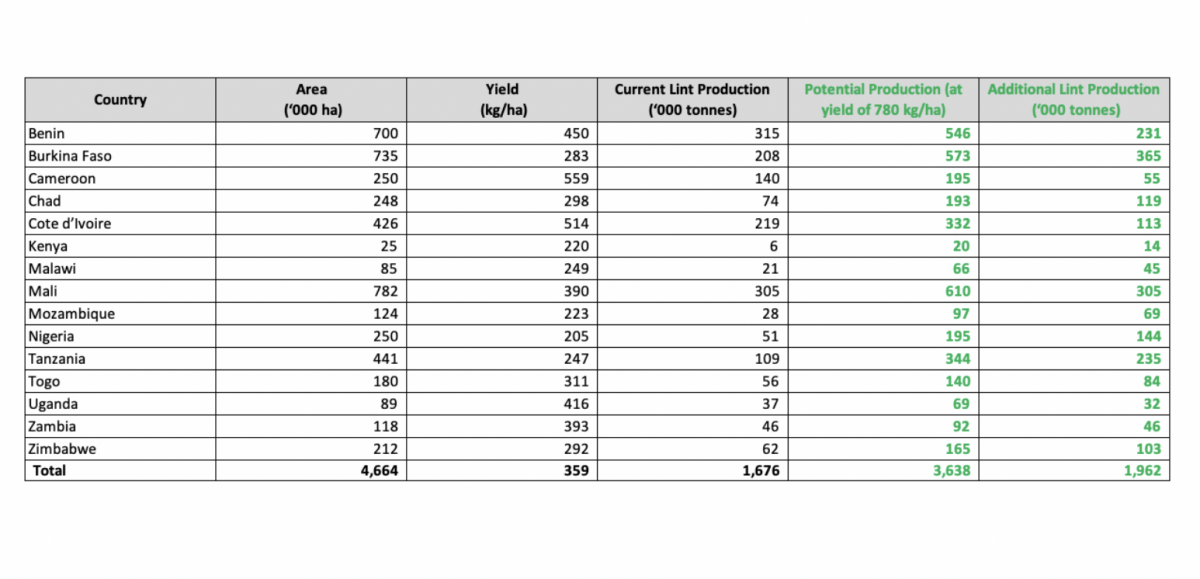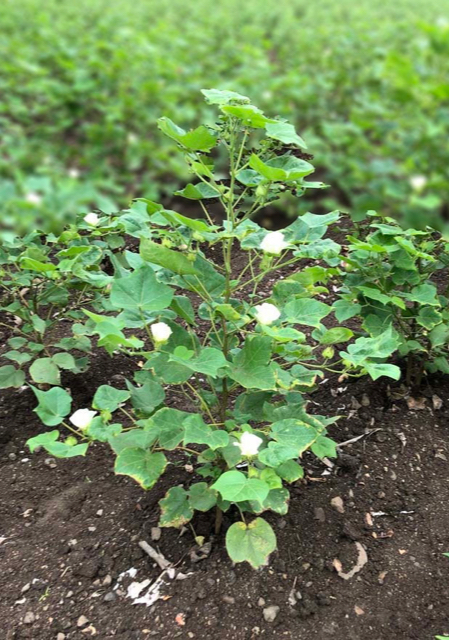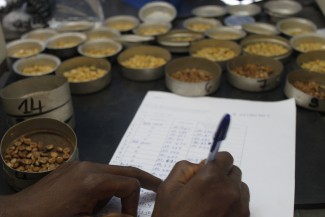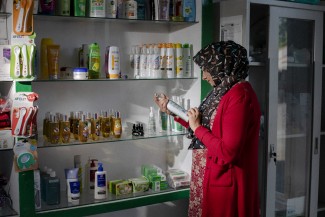Information access via tech could increase yields and incomes for cotton farmers in Africa
Few challenges in the history of agriculture have been more difficult to overcome than the many disadvantages smallholder farmers face. They include the absence of quality inputs, little or no access to international markets and insufficient land to farm.
But no challenge is more damaging to smallholders than the lack of access to information.
Successful cotton farming requires adherence to best practices, extensive knowledge of pests and diseases, a detailed understanding of the local soil characteristics, and training on crop management and the proper use of pesticides and fertilisers.
Given that many in developing countries lack that type of detailed and current information, it’s no surprise that decades of effort have failed to produce tangible results. In the least developed countries (LDCs), increasing yields has the potential to make an even greater impact.
For cotton farmers, technology could help provide them with the tools they require. The International Cotton Advisory Committee (ICAC) has been working to increase cotton yields by arming smallholder cotton farmers with the information they need to grow more and better cotton, minimise the environmental impact and generate more income for their families.
Taking the very best cotton production practices from across the globe, we are compiling them into an easy-to-understand format and putting advanced scientific knowledge into cotton farmers’ hands — literally.
Smashing the illiteracy barrier
While increased access to broadband internet has improved the situation for cotton farmers in recent years, it fails to address the needs of the most vulnerable of all smallholders: the illiterate. To ensure people aren’t left behind because they can’t read, the ICAC’s Soil & Plant Health App for smartphones was created as a voice-based, interactive program that delivers information via audio, photos and video.
When the app is launched, its built-in GPS technology first determines the exact location of the user. Not only does that allow the app to greet the farmer in the local language or dialect, it also uses GPS to gather detailed information about the local soil conditions and download predicted weather data. Once it has that data it can advise on the best time to plant and the app will be able to predict exactly how the cotton plant should look on any particular day in its growth. If cotton in the field doesn’t match what the app shows, the program begins to walk the farmer through a troubleshooting process to determine what the problem is.
Changing lives
Cotton-producing countries in West Africa currently have yields of 382 kg/ha, and the numbers are almost identical in southeast Africa. For those countries, the ICAC has promised to double yields – and in some cases bring them up to the global average of 780 kg/ha.
The chart below illustrates the potential impact of such an achievement. At left is the current area, yield and lint production for 16 African nations, while the two columns at right show how much additional lint would be generated by those countries if they were able to bring their yields up to the global average. Growers would more than double their production, from 1.7 million tonnes to more than 3.6 million tonnes — a gain of nearly 2 million tonnes of fibre with no increase in planted area.

The additional revenue generated would move through the entire supply chain, creating opportunities for additional employment, lifting people out of poverty, empowering women, providing new educational opportunities for children and opening the door to a better life for millions.
To make the app simultaneously more powerful and easier to use, the ICAC is currently working to integrate artificial intelligence (AI). Among other things, it would enable smallholders to upload an image of an insect or potentially diseased plant so the AI could match it to one or more of the thousands of images in its database.
But this isn’t really about the technology – it’s about knowledge. Technology is a very useful and inexpensive way to disseminate information broadly and quickly, but the goal is to arm people with the tools they need to make a better life for themselves and their families.
Together with officials in Chad, we worked to better understand the country’s cotton situation and how it could be improved. Cotton Tchad, a public/private initiative between Chad’s government and the Singapore-based agribusiness Olam International, is implementing this programme, which aims to double yields within three to five years.
Creating a better reality for smallholders
Another effort to inform is a Virtual Reality (VR) Cotton Training Programme that will allow farmers to walk in virtual cotton fields all over the world at different times of the season to experience a variety of farm operations and production practices. There are several reasons VR is ideally suited to teaching smallholders in LDCs:
* The headsets used in VR programs are wireless (no computer required).
* They can operate without internet access.
* They are becoming more affordable every day as global adoption increases. A simple ‘Google Carboard’ VR box costs just a few dollars.
In addition to being able to see the cotton plant during various stages of growth, users can be trained on potentially hazardous practices — such how to store and apply highly toxic pesticides and other hazardous chemicals — with zero risk of injury.

After gathering local weather and soil data, the app would tell a farmer, “Based on the fact you completed sowing 75-80 days ago, your plant has received about 1,500 heat units and should look like this today." - Photo courtesy of ICAC
Finally, VR is instrumental in teaching farmers about the various diseases and pests they likely will encounter during the growing season, including identifying beneficial insects that prey upon the pests that attack the crop.
Technology has the potential to help people in LDCs in more ways than providing guidance on cotton production. One of the most important challenges to alleviating poverty in LDCs, especially in Africa, is helping countries convert cotton fibre into textiles, apparel and other value-added goods made from the cotton seed and stalks. VR could facilitate the development of a cotton processing industry by enabling entrepreneurs to ‘walk into’ small-scale textile factories, for example, showing them the processes, technologies and equipment needed to convert cotton fibres into value-added products.
VR even can be used as a training programme for executives from brands and retailers, allowing them to experience and understand each link in the cotton supply chain. They need to know how the cotton products on their shelves got there and they need to be able to reassure their customers that the raw materials used in those products were produced in an ethical and sustainable way. Helping executives from major brands and retailers understand why cotton is preferable to synthetic fibres will only benefit the global cotton industry, including LDCs.
If you would like to reuse any material published here, please let us know by sending an email to EIF Communications: eifcommunications@wto.org.



